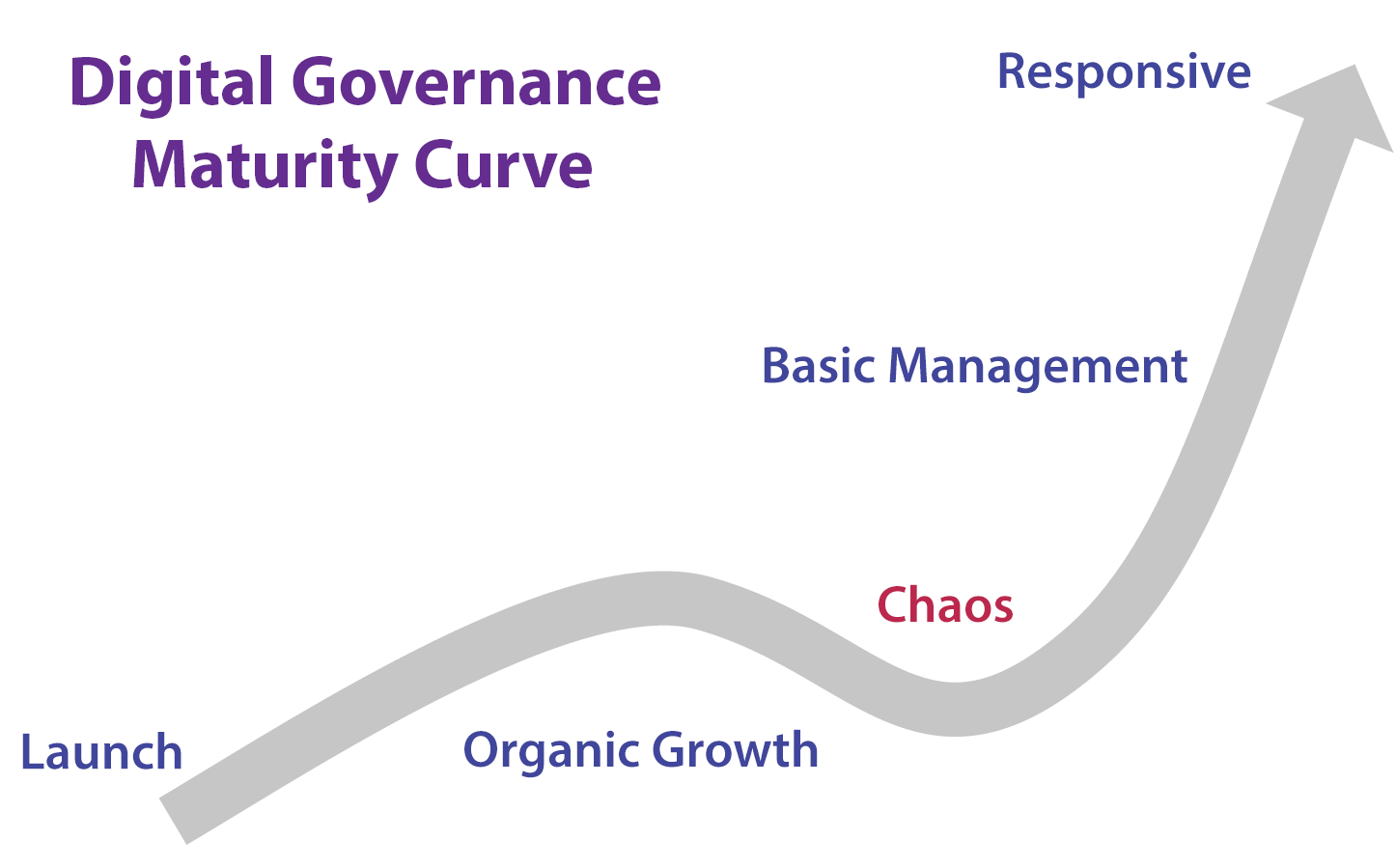The Dispersed Core Digital Team

Why do we need to consider the dispersed core and what is it?
The dispersed core digital team is required in organizations with multiple product lines, geographies, or business interests. In this case, multiple teams take on the roles and responsibilities of the core team but only for a particular digital presence or aspect. Examples of a dispersed core would include a university website where multiple departments. The websites for the various colleges which make up a university would be analogous to multiple product lines in a large organization or corporation. In situations such as these, the responsibilities of the core team may need to be dispersed. In these instances, multiple cores take on the same program and product management responsibilities as the corporate core team but for only a particular aspect of the digital presence, like an area of the organizational website or a brand-focused site or microsite.
For instance, in a holding company that has multiple brands and multiple websites, the core digital team’s standards decision-making may be minimal with the bulk being delegated to individual brands or businesses. Another rationale for distributing core team functions might be localization requirements. At times digital products and services must be more deeply localized to align business and cultural norms while the digital content can be translated from one language to another without much difficulty.
Often, in these deeply dispersed models, various brands, products, and programs have developed their own local digital governance concerns. For example, a product line that has been given authority to develop standards for its own product might delegate standards development authority to different geographical regions. When practices like these begin to emerge, the organization begins to develop a governance structure that resembles a network array with nodes or authority delegated from the core to brands, programs, or product lines of the organization.
If this model is well-designed it can be very powerful because it allows the top-level organization to dictate policy and standards in the areas where uniformity makes sense, while at the same time allowing brands and locales to have their own digital policy and standards as required to maximize business effectiveness.
From Lisa Welchman, “The Basics of Digital Governance” in Managing Chaos: Digital Governance by Design (New York: Rosenfield Media, 2015), 36-38





